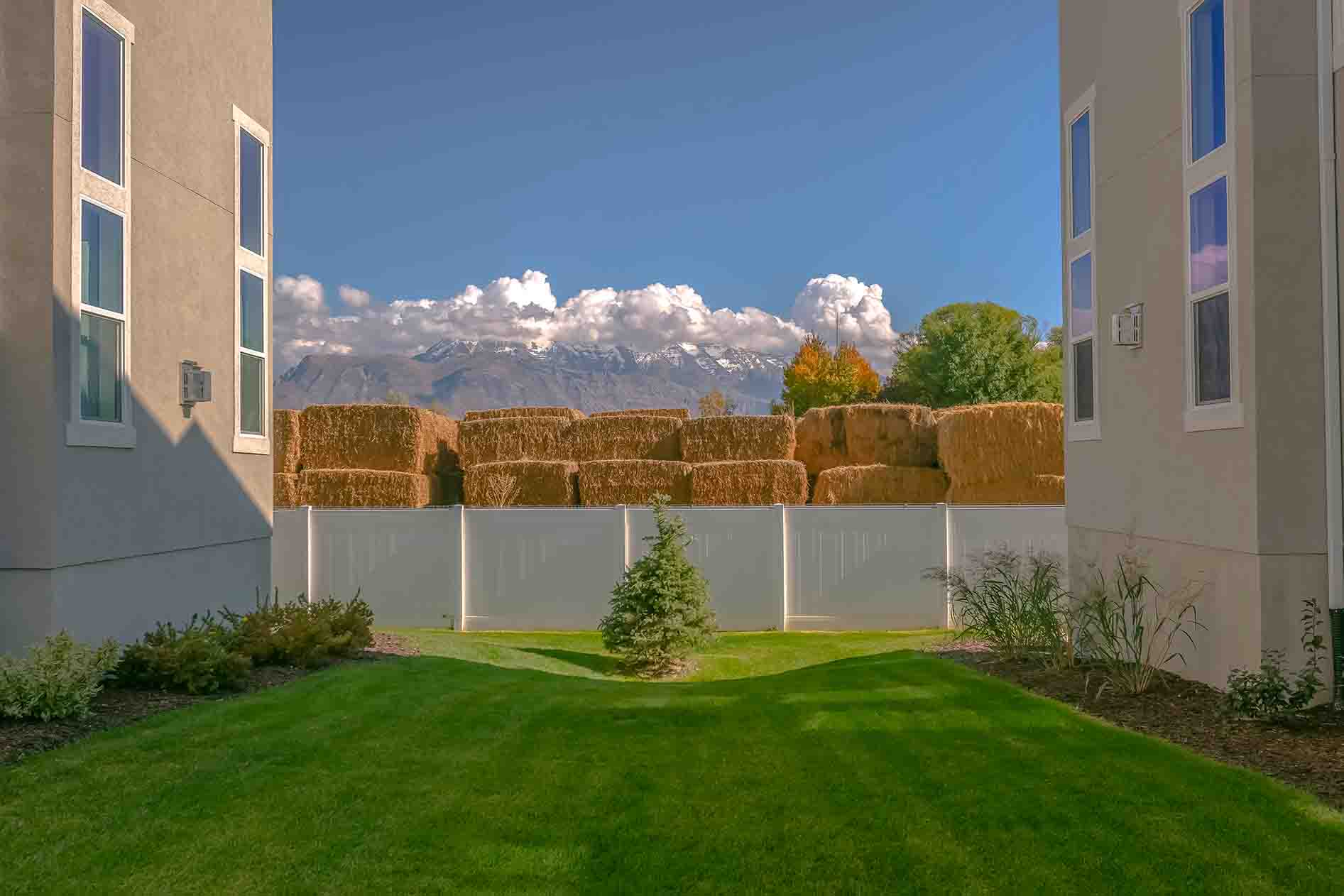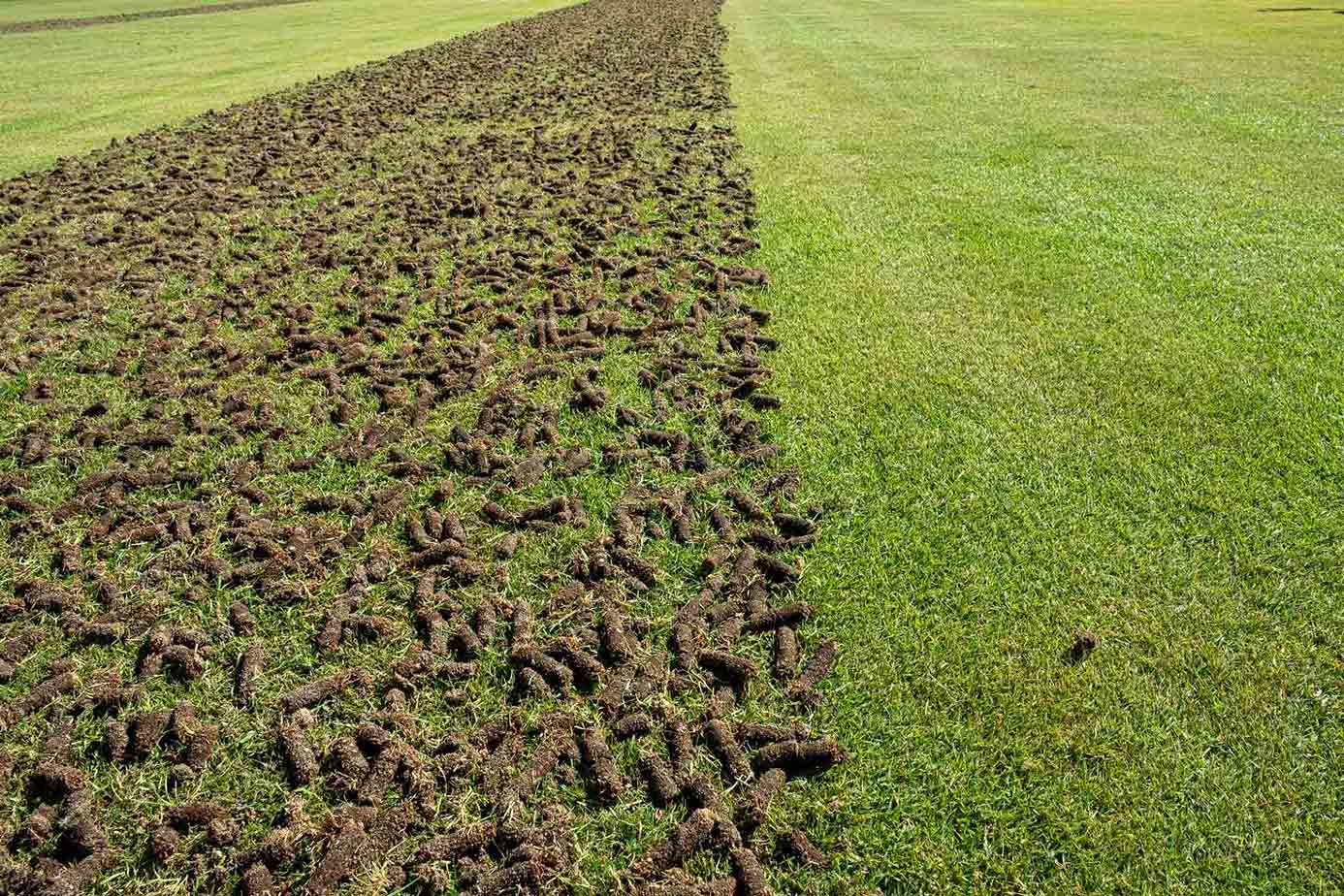Last Updated:
August 21, 2025
One of the most effective yet often overlooked practices in lawn care is aeration. Aeration is the process of creating openings in the soil to allow air, water, and nutrients to penetrate more effectively to the roots of the grass.
While aerating at the wrong time can stress the grass, proper timing can enhance your turf and help it thrive in Utah’s challenging growing conditions. Keep reading to find out when you should perform lawn aeration for proper lawn care practices in Utah.

Aeration is not a practice that should be done at random. The process temporarily disrupts the soil and grass, and while it ultimately promotes healthier turf, it does place some stress on the lawn. Grass needs time and the right conditions to recover and make use of the improved soil environment. That recovery depends heavily on the season and the growth cycle of the turf.
Grass grows most vigorously during its active growing season. This is when the lawn can heal quickly, fill in gaps, and take full advantage of better air, water, and nutrient movement in the soil. Aerating outside of this period can hinder growth instead of promoting it. Utah lawns face additional challenges, such as compacted clay soils in many areas and a dry climate that already places stress on turf. These factors make choosing the correct timing even more important.

Utah is unique in that it lies in a semi-arid region with hot summers, cold winters, and limited rainfall. The state’s elevation also plays a role, with many communities experiencing long winters and shorter growing seasons. These conditions mean that lawns in Utah often consist of cool-season grasses like Kentucky bluegrass, perennial ryegrass, and fine fescues.
Cool-season grasses thrive in moderate spring and fall temperatures, typically between 55 and 75 degrees Fahrenheit. They struggle in the peak heat of summer and go dormant during the coldest parts of winter. Because these grasses dominate Utah lawns, the best aeration windows align with their natural growth cycles in spring and fall.

Fall is often considered the prime season for aerating lawns in Utah. After the summer heat has passed, grass begins growing vigorously again in the cooler temperatures of early to mid-fall. This is the time when roots grow strongest, and the lawn is actively preparing for winter dormancy.
Aerating in fall allows water and nutrients to reach the root zone just as the grass is storing energy for the cold months ahead. The lawn has enough growing days left to recover before frost arrives, and the soil is usually softer from autumn rains, making aeration more effective.
Key benefits of fall aeration include:
Spring is another good time to aerate, though it is generally considered secondary to fall in Utah. Aerating in early spring (between late March and early May), once the ground has thawed but before the summer heat arrives, gives the lawn a chance to breathe after being compacted by winter snow and foot traffic.
Spring aeration helps the grass recover quickly as it emerges from dormancy. However, because summer stress is just around the corner, the window for recovery is shorter compared to fall. Aerating too late in spring can leave the grass vulnerable to heat stress and drought.

Not every lawn needs to be aerated every year, but many Utah lawns benefit from aeration more often than not due to soil conditions and climate challenges. Aeration is especially important in the following situations:
Many Utah neighborhoods have heavy clay soil, which is highly prone to compaction. Soil compaction prevents roots from spreading, limits oxygen exchange, and restricts water penetration. If your lawn feels hard when you walk on it or water tends to pool on the surface, aeration is necessary.
Lawns that see frequent activity from children, pets, or gatherings often become compacted more quickly. Aeration relieves this compaction, allowing the grass to recover from the wear and tear of regular use.
Thatch is a dense layer of organic matter that accumulates between the grass and soil. When thatch becomes too thick, it blocks water and nutrients from reaching the roots. Aeration helps break through thatch, improving the lawn’s overall health.
If your yard has areas where water frequently collects or drains slowly, aeration can help. Opening the soil improves drainage, reducing puddles and preventing root rot.
Aeration is also beneficial when overseeding to fill in thin or bare patches. By loosening the soil and allowing better seed-to-soil contact, aeration improves germination rates and promotes thicker, more even turf.

Beyond season and lawn type, a few specific conditions determine how successful aeration will be. Understanding the soil and weather conditions that affect your lawn are crucial to performing effective aeration. Homeowners should keep these in mind when planning the process:

There is no universal answer, but most Utah lawns benefit from aeration once a year. Lawns with heavy clay soil, high traffic, or persistent compaction may need it twice annually: once in spring and once in fall. On the other hand, a healthy lawn with sandy soil and low use may only need aeration every couple of years.
The key is to monitor your lawn for signs of compaction, poor drainage, or thinning growth. If these symptoms are present, aeration should be part of your seasonal lawn care plan.
The timing of aeration plays the biggest role in determining whether your efforts are successful or counterproductive. Aerating at inopportune times can actually damage your turf and make recovery very challenging. To avoid any potential issues, it is always a good idea to trust a professional lawn care company to take care of your aeration needs.
If you are looking for reliable and effective lawn aeration in Salt Lake City, call Holmes today for a free quote on our liquid lawn aeration and lawn care services!
How To Care For Kentucky Bluegrass In Utah Lawns
Kentucky bluegrass is beloved as one of the most beautiful and comfortable turf types available. Come learn how to maintain this grass in your Utah lawn.
Learn MoreHow To Care For Perennial Ryegrass In Utah Lawns
This post explores why perennial ryegrass is perfect for Utah homeowners who want a resilient lawn that looks great!
Learn MoreHow To Care For Tall Fescue In Utah Lawns
This blog post explores what makes tall fescue one of the most popular grass types in Utah, and what steps you can take to maintain a tall fescue lawn.
Learn More